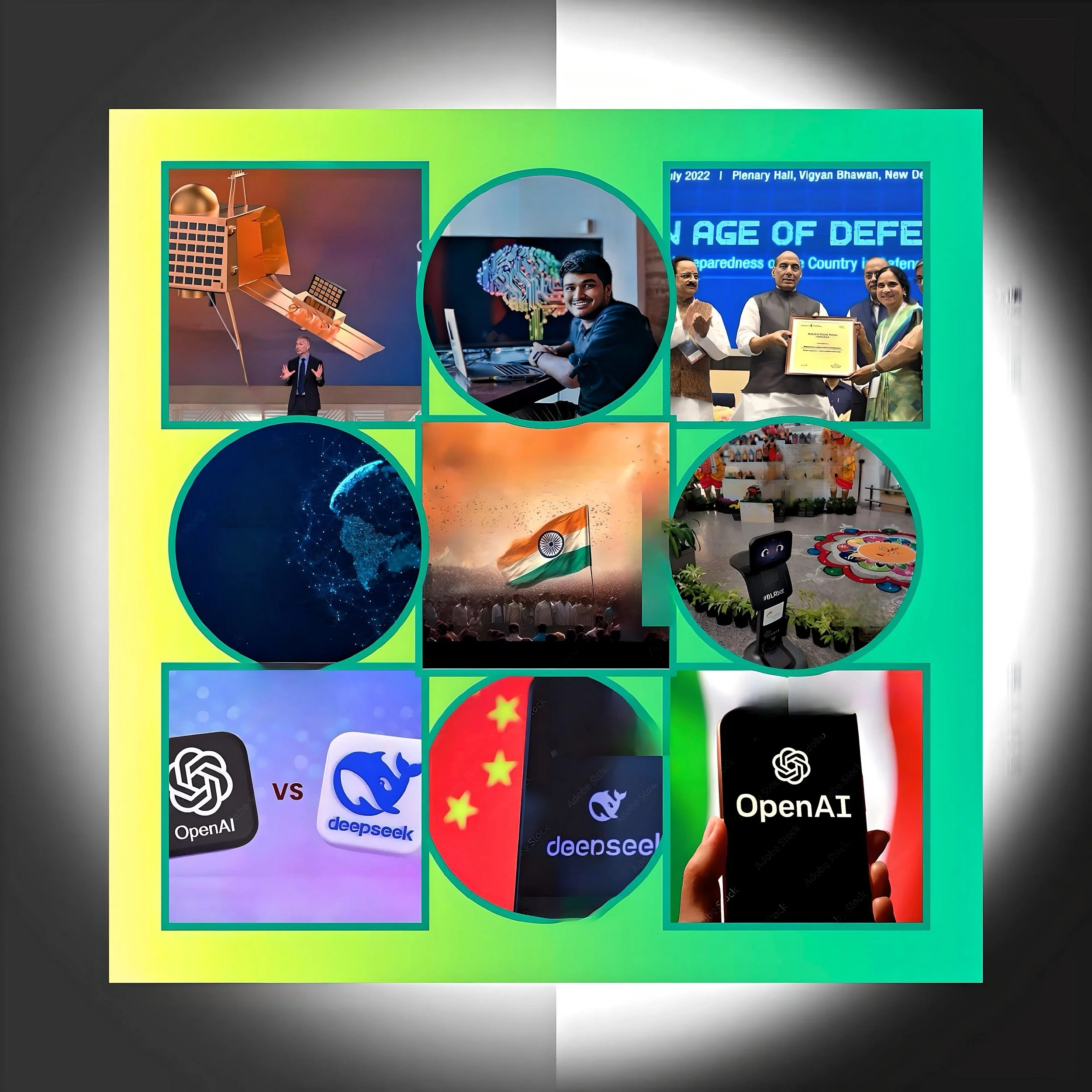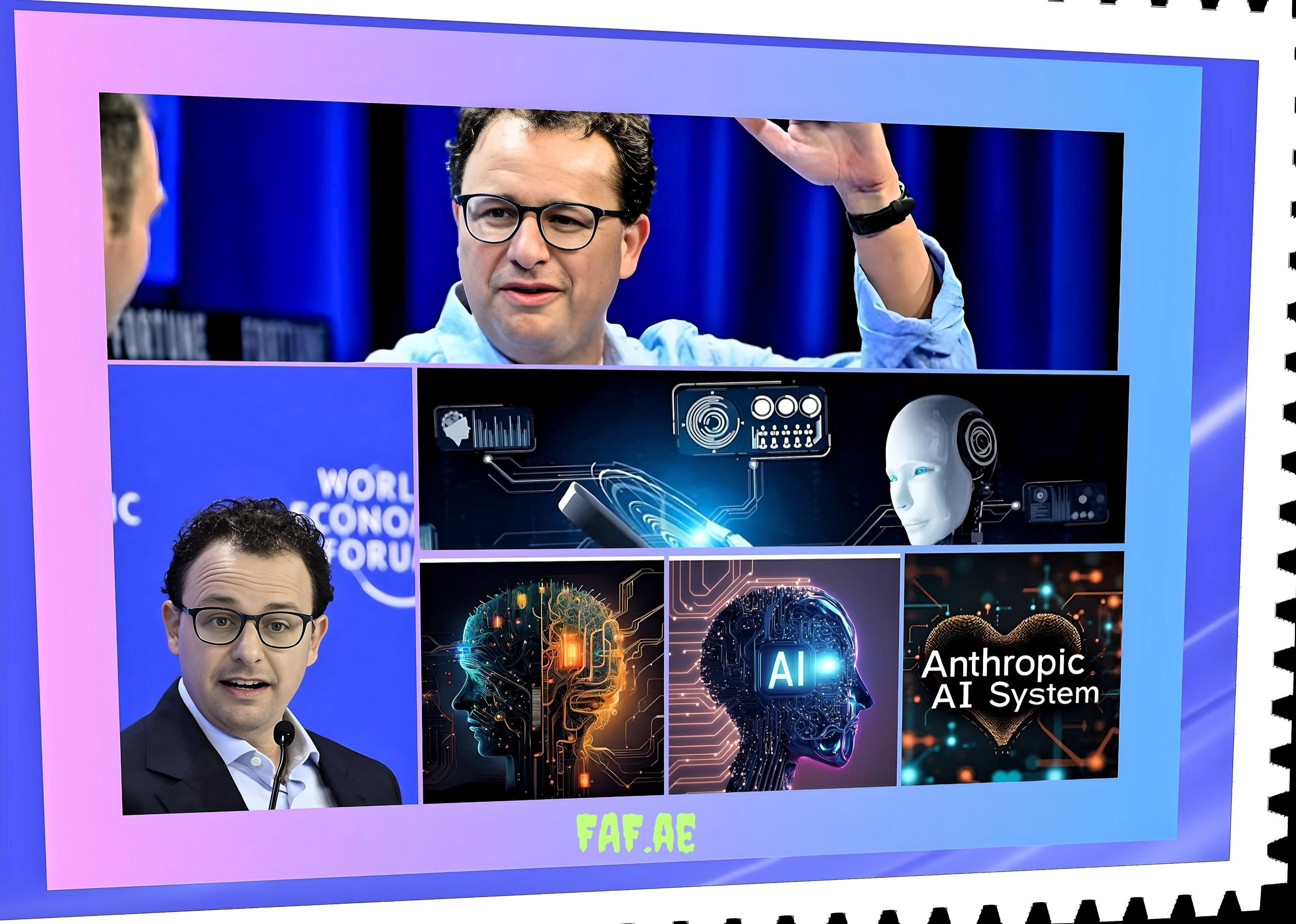The State of AI in 2025: March 2025 Latest Developments and Breakthroughs
Introduction
As we progress through 2025, the artificial intelligence landscape continues to evolve at an unprecedented pace, with significant developments reshaping how businesses operate, consumers interact with technology, and governments approach regulation.
The first quarter of 2025 has witnessed remarkable breakthroughs across AI infrastructure, autonomous agents, and industry-specific applications. Recent weeks have been particularly eventful, with significant announcements from leading tech companies and emerging players.
FAF provides a comprehensive overview of the latest developments in the AI world as of mid-March 2025, highlighting the transformative impact these innovations have on various sectors and the broader technological ecosystem.
Major AI Breakthroughs and Company Announcements
In recent weeks, the AI industry has seen several groundbreaking developments, with established tech giants and emerging startups announcing significant innovations.
On March 10, 2025, China unveiled Manus, a groundbreaking, fully autonomous AI agent capable of operating without human intervention across various applications.
This development represents a significant milestone in the evolution of autonomous AI systems, potentially rivaling similar Western technologies from companies like OpenAI and Google.
In a significant corporate development, Google co-founder Larry Page launched Dynatomics on March 7, 2025, an AI startup focused on next-generation manufacturing.
The company aims to revolutionize industrial production by integrating AI-driven automation into manufacturing processes. This move marks Page’s return to the tech spotlight with a focus on practical AI applications in traditional industries. It highlights the growing trend of AI technologies being applied to transform conventional sectors beyond pure software applications.
Meanwhile, Elon Musk’s AI ventures continue generating innovation and controversy. His AI chatbot Grok recently sparked debate after claiming that Donald Trump is a “Putin-compromised asset,” raising fresh concerns about bias and misinformation in AI-driven platforms.
This incident occurred just as Musk’s company xAI launched Grok 3, an advanced AI chatbot with ten times more computational power than its predecessor. It features enhanced reasoning skills and introduces ‘Deep Search’ for complex queries.
The controversies surrounding Grok illustrate the ongoing challenges in developing AI systems that can engage with politically sensitive topics while maintaining neutrality.
AI Infrastructure and Investment Landscape
The foundation of AI advancement relies heavily on sophisticated infrastructure, and substantial investments have been made in this area in recent weeks.
Meta has begun testing proprietary chips specifically designed for AI training. The company aims to reduce reliance on third-party suppliers while enhancing AI performance and optimizing processing power.
This move signals Meta’s ambition to build a robust, self-sufficient AI infrastructure for future innovations, joining other tech giants like Google and Apple in developing custom silicon for AI applications.
In perhaps the most significant infrastructure investment announcement, OpenAI committed $12 billion to CoreWeave, a cloud computing firm specializing in GPU workloads.
This strategic investment reduces OpenAI’s dependence on Microsoft and substantially expands its AI training capabilities.
The partnership aims to accelerate AI model deployment, reinforcing OpenAI’s position as a leader in artificial intelligence advancements while securing the computational resources needed for future model development.
Google Cloud has also enhanced its AI infrastructure by launching A4X VMs powered by NVIDIA GB200 NVL72 GPUs and Grace CPUs.
This new infrastructure delivers four times the training performance of previous generations, enabling large-scale reasoning models, multimodal AI, and high-concurrency workloads with improved efficiency and scalability.
These advancements in cloud computing infrastructure are crucial for supporting the increasingly complex AI models being developed by researchers and companies.
AI Products and Consumer Applications
The consumer-facing AI landscape has witnessed significant evolution with several product launches and enhancements.
Apple has integrated AI-powered app review summaries in iOS 18.4, making it easier for users to understand app feedback through natural language processing that condenses long reviews into concise insights.
This feature improves the App Store browsing experience and helps users make more informed decisions about the applications they download.
Microsoft is expanding the capabilities of its AI assistant by integrating 3D gaming into Copilot, aiming to enhance user engagement with AI-driven entertainment.
According to job listings, Microsoft plans to develop interactive, browser-based games using Babylon.js and Unity, aligning with the company’s vision of merging AI with immersive digital experiences.
This development represents an interesting convergence of AI and gaming technologies, potentially opening new avenues for interactive entertainment.
In the retail sector, Home Depot has introduced an AI-powered “Magic Apron,” a generative AI tool that assists retail employees in customer service, inventory management, and DIY recommendations.
This wearable AI device is designed to improve efficiency across Home Depot stores, demonstrating how AI is being integrated into physical retail environments to enhance both employee productivity and customer experiences.
Enterprise AI and Commercial Applications
The enterprise AI sector is experiencing rapid transformation, with new tools and services targeting business applications.
OpenAI recently launched new tools that help businesses create AI agents for customer service, automation, and data analysis.
These tools simplify AI integration, allowing companies to streamline operations and enhance efficiency across various business functions.
Additionally, OpenAI has announced plans to charge up to $20,000 per month for specialized AI agents targeting enterprise clients. These advanced AI solutions handle complex tasks and provide customized automation, targeting businesses that require tailored AI capabilities to improve efficiency and decision-making.
Meta has unveiled LLaMA 4, a new voice-powered AI model designed for natural language interactions. The model aims to improve AI assistants, automated customer service, and real-time translation, making AI-driven communication more seamless for businesses and consumers alike.
This development represents Meta’s continued investment in conversational AI technologies to compete with similar offerings from Google, Microsoft, and OpenAI.
In the healthcare sector, Insilico Medicine, a leader in AI-driven drug discovery, has received an official generic name approval for its breakthrough drug, Rentosertib. The drug, designed using AI-powered molecular modeling, is set to advance treatments for rare diseases, showcasing the transformative potential of AI in pharmaceutical development and healthcare innovation.
AI in Defense and National Security
The defense sector continues to be a significant area for AI development and investment. Shield AI, a defense-tech company specializing in AI-powered autonomy solutions, has raised $240 million at a $5.3 billion valuation.
This substantial funding will support the expansion of Hivemind Enterprise, a platform enabling autonomous military aircraft operations, highlighting the growing importance of AI in defense applications and national security.
On the policy front, NASA has officially blocked China’s AI company, DeepSeek, from its systems, following similar actions taken by other federal agencies. This decision stems from growing concerns over national security and the potential risks posed by foreign AI models accessing sensitive U.S. government data.
The move aligns with broader U.S. efforts to limit China’s influence in AI research and development, particularly in areas with potential military or cybersecurity implications.
Government Initiatives and Policy Developments
Governments worldwide are increasingly recognizing the strategic importance of AI and implementing policies to foster innovation while addressing potential risks.
European Union
The European Union (EU) has been at the forefront of developing a comprehensive framework for artificial intelligence (AI), focusing on fostering innovation while ensuring safety, trustworthiness, and respect for fundamental rights. Below is an overview of key AI government initiatives and policy developments in the EU as of March 14, 2025.
European AI Strategy
The EU’s overarching approach to AI, launched with a significant push in 2018 and evolving since, emphasizes "excellence and trust." It aims to position the EU as a global leader in human-centric and ethical AI.
In January 2025, European Commission President Ursula von der Leyen announced plans for a broad AI Strategy to be launched later in 2025, including the "Apply AI" initiative to drive industrial adoption across key sectors. This responds to the low uptake of AI among EU businesses (only 13.5% as of early 2025) and seeks to boost competitiveness.
United states AI world
The US government is shifting its AI policy focus under the new administration, emphasizing innovation and leadership while removing previous regulatory barriers.
The Biden administration's 2023 AI executive order was revoked in January 2025, with a new plan in development to enhance US AI dominance.
Current efforts include public input for an AI Action Plan, due by July 2025, and ongoing funding for AI research, such as $68 million from the Department of Energy.
State-level AI laws, like California's healthcare AI disclosure rules, are emerging, adding complexity to the national landscape.
An unexpected detail: the policy shift may reduce oversight on AI safety, potentially impacting privacy and civil rights protections.
India state of affairs
India is undergoing a remarkable transformation in its approach to AI development, with the government actively shaping an AI ecosystem where computing power, GPUs, and research opportunities are accessible at an affordable cost.
Through the IndiaAI Mission, the government has allocated ₹10,300 crore (approximately $1.2 billion) over five years to strengthen AI capabilities.
A key focus of India’s AI mission is the development of a high-end common computing facility equipped with 18,693 Graphics Processing Units (GPUs), making it one of the most extensive AI compute infrastructures globally. This capacity is nearly nine times that of the open-source AI model DeepSeek and about two-thirds of what ChatGPT operates on, positioning India as a significant player in the global AI infrastructure landscape.
Search and Online Platform Updates
The digital search landscape continues to evolve with AI integration. Google released its March 2025 core update on March 13, which is designed to better surface relevant and satisfying content for searchers across all types of sites.
Google specifically mentioned that this update is not focused on content creators, though they added that “we also continue our work to surface more content from creators through a series of improvements throughout this year”. This indicates Google’s ongoing refinement of its search algorithms to better accommodate the changing nature of content creation and consumption in an AI-driven web ecosystem.
Additionally, reports indicate that Google’s search volume has grown by 22% over the past year, despite the proliferation of AI-powered search alternatives.
However, a study also revealed that AI search engines are “confidently wrong way too often,” highlighting the ongoing challenges in achieving both accuracy and confidence in AI-generated search responses. These developments reflect the tensions and growing pains as search platforms incorporate more AI capabilities while striving to maintain information accuracy and reliability.
Recognition and Awards in AI
The AI research community continues to acknowledge pioneering work in the field. AI pioneers Andrew Barto and Richard Sutton, known for their groundbreaking work in reinforcement learning, have been awarded the prestigious 2025 Turing Award.
Their contributions have shaped modern AI techniques used in robotics, game theory, and autonomous systems, with reinforcement learning being a fundamental technology underlying many recent advances in AI capabilities. This recognition highlights the importance of foundational research in enabling today’s rapid AI advancements.
AI Trends and Future Outlook
Looking beyond the immediate updates, several key trends are shaping the evolution of AI in 2025. Agentic AI, which autonomously adapts and learns, is set to empower businesses with proactive decision-making and enhanced operational intelligence. Companies across industries are increasingly moving from experimentation to optimization, focusing on maximizing the value of their AI investments. More than 70 percent of organizations are already seeing return on investment from generative AI, and this number is expected to rise as more companies transition from production to optimization.
The rise of multi-agent systems (MAS) represents another significant trend, with AI agents collaborating to understand business users, structure problems, and interact with domain-specific expert AI agents. These systems can work together to complete complex tasks, and in the future, they may proactively respond to business events such as incoming customer inquiries, supply chain disruptions, or demand surges.
Additionally, AI is rapidly transforming robotics through generative methods. By combining different sorts of data—such as human demonstrations, teleoperation, and internet videos—roboticists have made major breakthroughs in training robots more effectively. This approach gives robots a massive head start over those trained with more traditional methods, enabling them to improvise and better determine appropriate actions in real-world scenarios.
Conclusion
The AI landscape in March 2025 is characterized by rapid innovation, substantial infrastructure investments, and expanding applications across industries. From autonomous agents and specialized enterprise tools to breakthroughs in healthcare and manufacturing, AI technologies are increasingly woven into the fabric of business operations and consumer experiences.
Government initiatives, particularly from countries like India, are creating more inclusive AI ecosystems, while policy considerations around national security continue to shape international AI collaboration and competition.
As we move through 2025, the focus on AI optimization, multi-agent systems, and industry-specific applications is likely to intensify.
The significant investments in AI infrastructure by major tech companies suggest continued acceleration in model capabilities and performance. However, challenges around bias, misinformation, and responsible deployment remain important considerations for the industry to address.
With each new development, the transformative potential of AI becomes clearer, as does the importance of thoughtful approaches to harnessing these powerful technologies for societal benefit.






